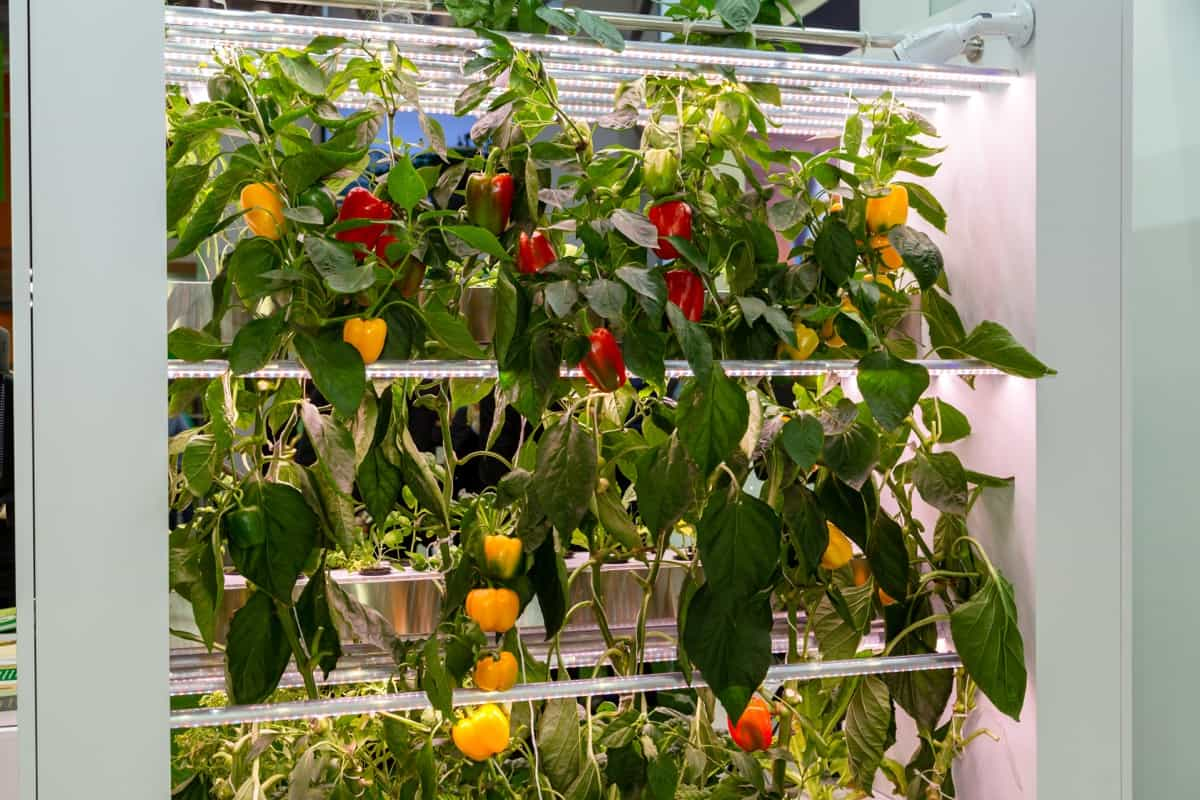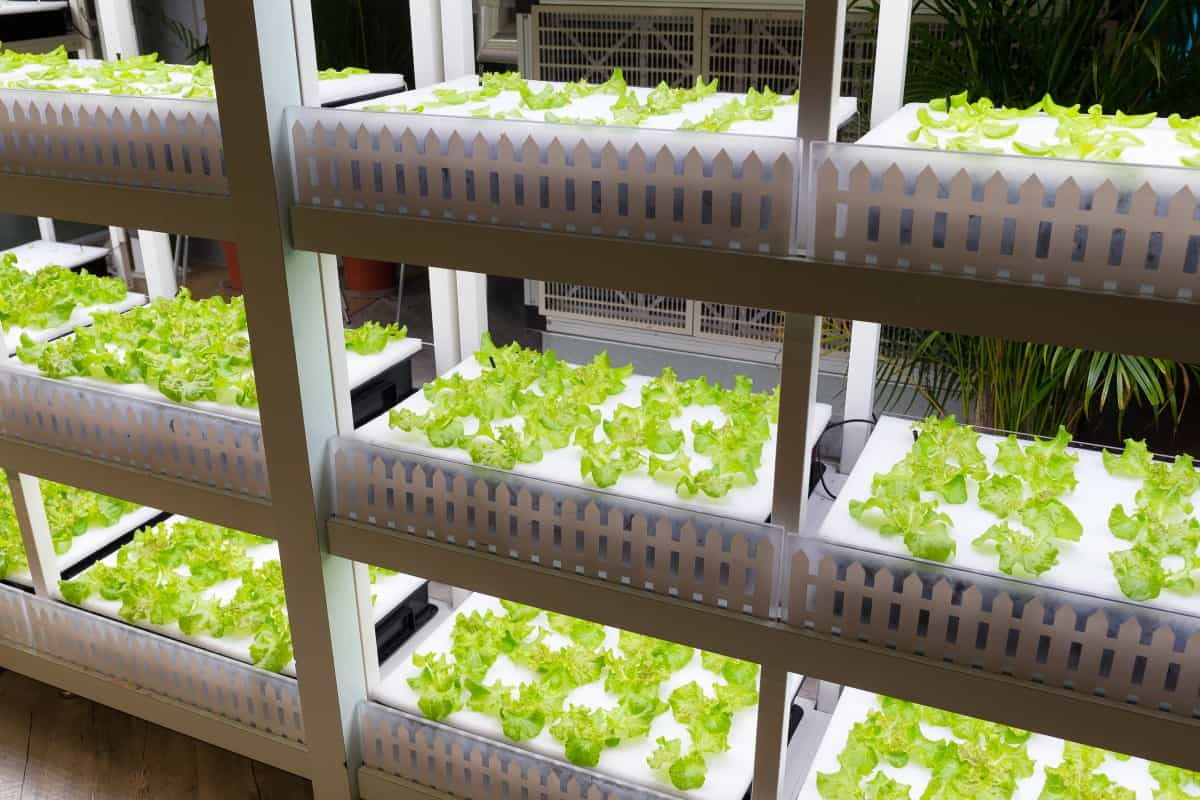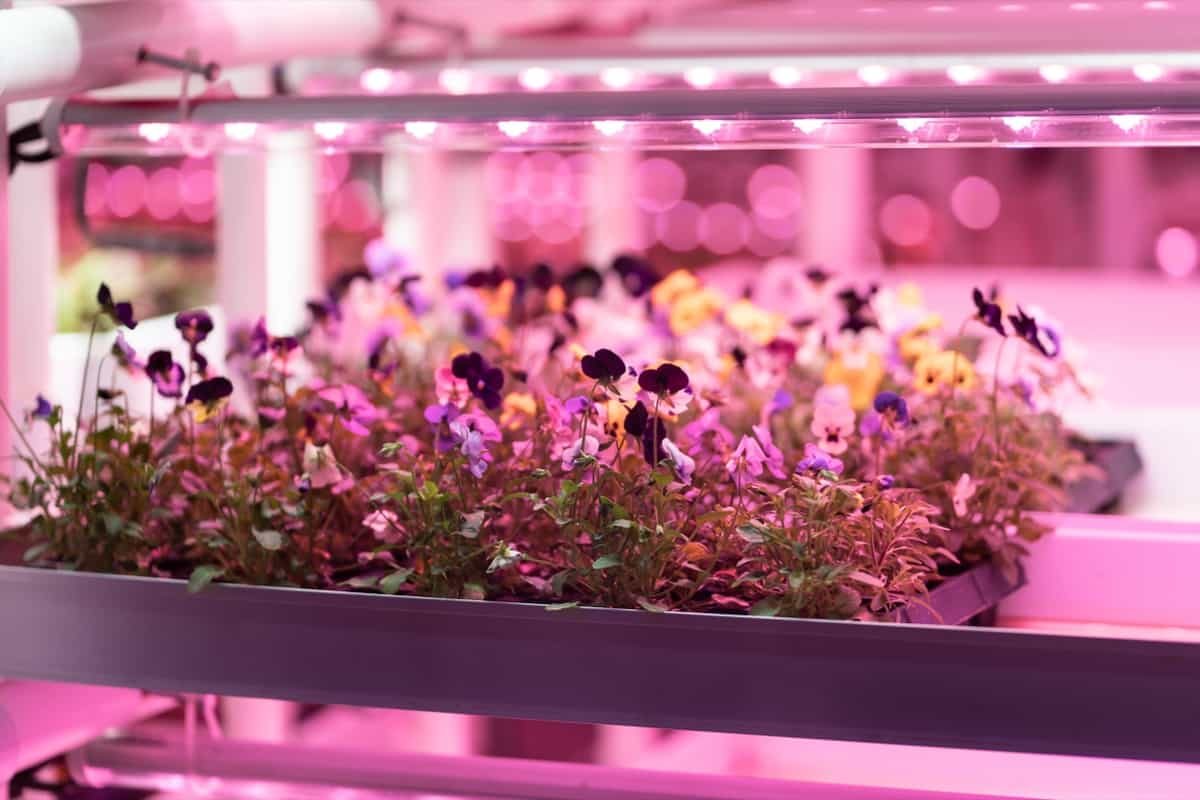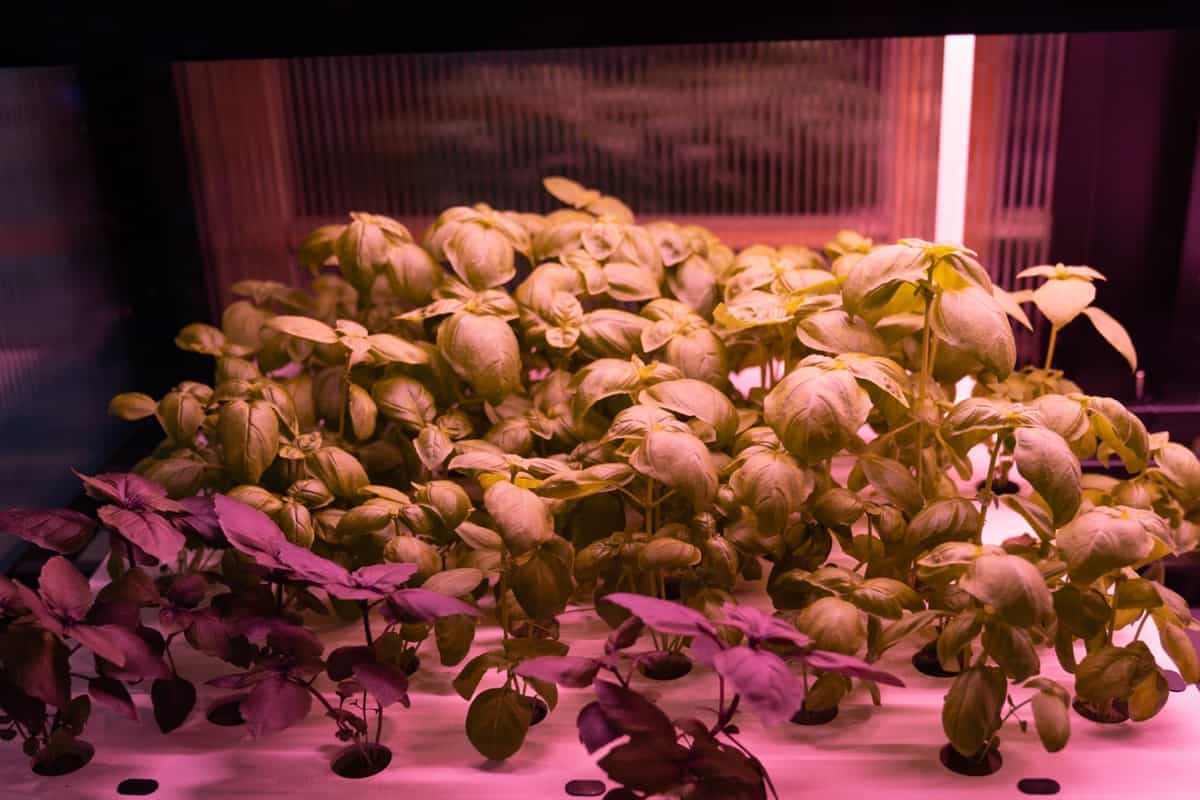Effective hydroponic garden lighting selection is essential to the success of your indoor garden. The perfect light source for your plants should have the appropriate spectrum, intensity, and duration. We’ll break down important elements in this guide to assist you in making an informed choice and maximizing your plants’ growth.

How to Choose the Right Hydroponic Grow Light
What is a Grow Light, and What Advantages Does it Offer Hydroponic Plants?
A grow light is a specialized lamp that emanates artificial light with a high intensity to simulate sunlight for hydroponic plants. These lights play a crucial role in hydroponic horticulture by creating an environment conducive to efficient photosynthesis, resulting in consistent growth and increased yields.
Grow Lights’ Benefits for Hydroponic Plants
- Increased Growth Rates and Yields: Grow lights enhance plant growth rates, leading to higher yields than natural sunlight.
- More Consistent Growth Cycles: With grow lights, you can maintain consistent growth throughout the year, regardless of seasonal changes.
- Extended Growing Seasons: Grow lights enable year-round cultivation, extending the growing season beyond traditional outdoor limitations.
- Reduced Energy Costs: While they consume electricity, grow lights are designed for efficiency, resulting in lower energy bills than heating an entire greenhouse.
- All-Weather Use: Grow lights can be employed in any location unaffected by external weather conditions.
Why Choose to Grow Lights Over Sunlight
- Continuous Use: Grow lights provide consistent lighting, unlike sunlight, which varies with the time of day and weather conditions.
- Customizable Spectrum and Intensity: Grow lights can be adjusted to emit specific light spectrums and intensities tailored to different growth stages and plant types.
- Proximity to Plants: Grow lights can be positioned closer to plants, ensuring better light penetration and minimizing shadow areas.
- Location Flexibility: They are versatile and suitable for various indoor setups, irrespective of outdoor climate.
- Research-Backed Results: Studies show that grow lights can significantly increase fresh weight, leaf count, and plant height compared to natural sunlight.
The Operation of Grow Lights
By producing intense artificial light that mimics sunshine, grow lights maximize photosynthesis for plant development. They are available in a range of spectrums and intensities that can be adjusted to suit the needs of different plants.
Key Lighting Terms for Choosing Hydroponic Lights
- Lumens: Measure the total visible light emitted, crucial for covering the growing area.
- Kelvins: Indicate the light’s color temperature, with higher ratings resembling cooler, whiter, and lower ratings warmer, yellower light.
- PAR Value: Measures photosynthetically active radiation, essential for maximum plant growth.
In case you missed it: How to Use Grow Lights for Indoor Seedlings: Best Grow Light Setting for Seedlings

Grow Light Types
Inefficient, costly, and generating heat, incandescent lights are not advised for use in hydroponic systems.
- Fluorescent: Heat-safe, economical, and effective; good for some hydroponic plants.
- LEDs (Light Emitting Diodes) are long-lasting, incredibly efficient, and adaptable to various plant species.
- Halogen: Produce a spectrum similar to that of the sun at a lower cost than certain alternatives but with less efficiency.
- High-Pressure Sodium (HPS): More effective than halogen lights, HPS emits a reddish-orange light perfect for flowering plants.
- Metal halide: Better than halogen lights, metal halide (MH) lamps emit a bluish-white light that is good for vegetative development.
Selecting the Ideal Grow Light
Plant kind and development stage are important considerations when choosing the right grow light. Use fluorescent or LED lights for vegetative growth; HPS or MH lights work well for flowering plants. Consider plant size, available space, and required light intensity.
Duration of Lighting and grow light timers for Plant Growth
Plants need darkness for efficient metabolism; they do not always need light. For the most part, plants only need at least 12 hours of light per day. Timer devices for grow lights help manage lighting schedules. With the help of grow light timers, you can precisely manage how long the lights are on each day, avoiding overheating and guaranteeing ideal growing conditions.
Using Height Adjusters for Grow Lights
Adjusters for height assist in keeping plants and grow lights at the proper distance. For best results, adjust them based on the growth stage and the plant’s light requirements.
Using Grow Lights to Increase Plant Yields
One tried-and-true way to increase plant yields in hydroponic and indoor gardening is to use grow lights. Plants can perform photosynthesis with the proper light spectrum and intensity provided by these lights, leading to steady growth and increased yield. Adjusting the length and spectrum of light to correspond with several growth stages may enhance plant well-being and optimize crop production.
In case you missed it: 10 Benefits of Growing Plants with Nutrient Film Technique – NFT Hydroponics

In addition to extending the growing season, grow lights enable year-round cultivation without the constraints of natural sunshine. They also provide greater control over environmental factors, which leads to stronger, healthier plants and, ultimately, larger food yields, making them an essential tool for contemporary agriculture and gardening.
Are Grow Lights Energy-Efficient?
In general, grow lights are more energy-efficient than conventional lighting sources. Grow lights that use LEDs (light-emitting diodes), in particular, are renowned for their efficiency. Compared to incandescent or fluorescent light bulbs, they use less energy to create light. By emitting the precise wavelengths of light required by plants for photosynthesis, LED grow lights minimize heat loss from wasted energy.
In addition to reducing electricity costs, this energy efficiency helps make indoor gardening more sustainable and eco-friendly. Please consider LED grow lights while selecting them because of their extended lifespan and ability to save energy.
Grow Light Recommendations for Different Plant Types
- Leafy Greens and Herbs: For plants like lettuce and basil, go for cool white fluorescent or LED grow lights, as they promote lush foliage.
- Flowering Plants: Flowers like roses and orchids thrive under a combination of red and blue spectrum LED grow lights, which encourage blooming.
- Fruit-Bearing Plants: Tomatoes and peppers benefit from full-spectrum LED or high-output fluorescent lights to support growth and fruit production.
- Seedlings: Young plants need high-intensity light. Use T5 fluorescent or high-output LED lights placed close to the seedlings.
- Cacti and Succulents: These plants require bright, direct light. Opt for high-intensity LED or HPS grow lights for arid-loving species.
In case you missed it: How to Grow Hydroponic Potatoes: A Comprehensive Guide

Conclusion
In conclusion, various criteria, including plant kind, growth stage, and unique light requirements, must be considered when selecting the best grow light for hydroponic plants. Grow lights are a great alternative to natural sunshine for indoor gardening because they provide reliable, adaptable, and effective lighting that can be used all year. Comprehending lighting terminology and equipment is crucial to get the most out of your hydroponic crop.
- Feed Your Flock for Less: Top 10 Tips to Save on Chicken Feed
- Ultimate Guide to Ossabaw Island Hog: Breeding, Raising, Diet, and Care
- Hatching Answers: The Top 10 Reasons Your Chickens Aren’t Laying Eggs
- Eggs and Economics: Breaking Down the Cost of Raising Backyard Chickens
- Defend Your Greens: Proven Methods to Keep Iguanas Out of Your Garden
- Ultimate Guide to Cinnamon Queen Chicken: A Comprehensive Guide for Beginners
- Ultimate Guide to California Tan Chicken: Breeding, Raising, Diet, Egg-Production and Care
- Ultimate Guide to Marsh Daisy Chicken: Breeding, Raising, Diet, and Care
- 10 Types of Chicken Farming Businesses You Can Start for Profits